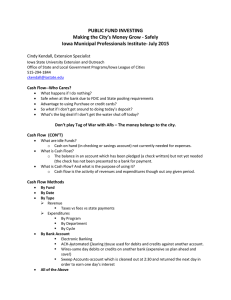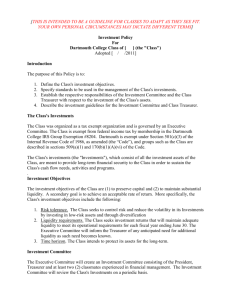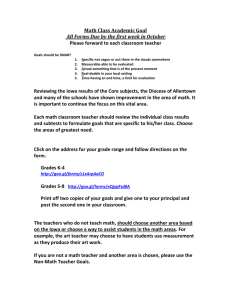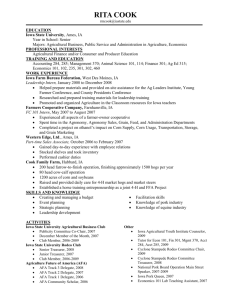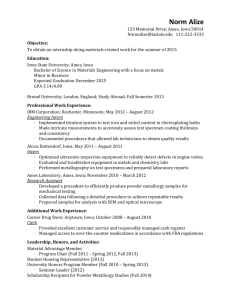Finance and Public Fund Investing Handout
advertisement
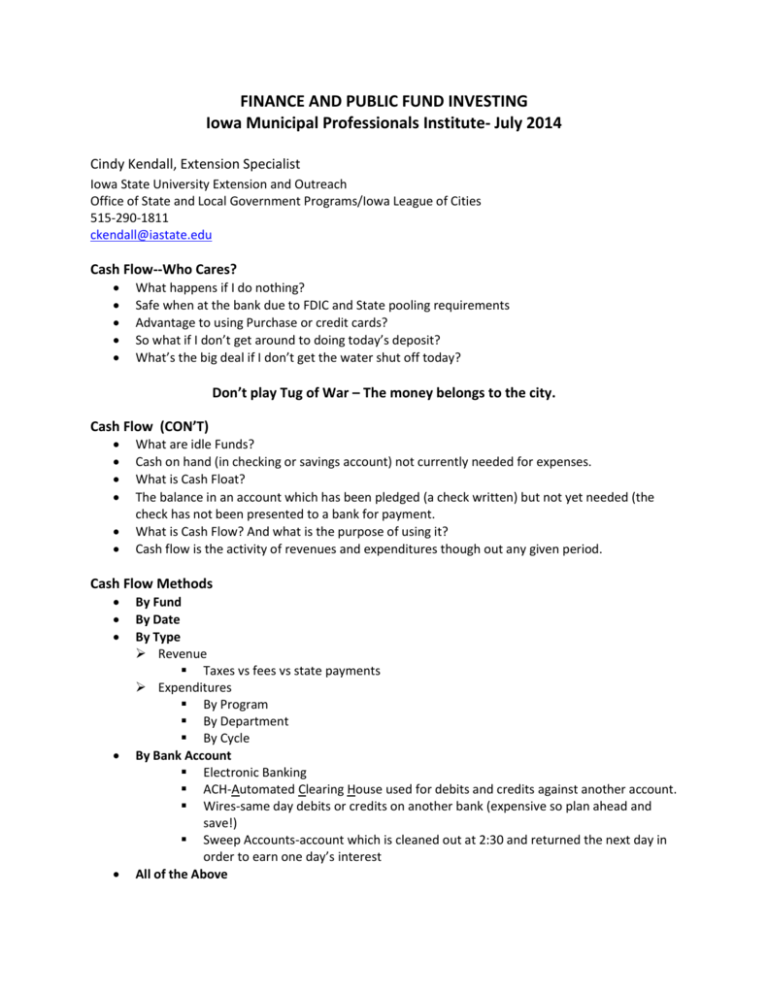
FINANCE AND PUBLIC FUND INVESTING Iowa Municipal Professionals Institute- July 2014 Cindy Kendall, Extension Specialist Iowa State University Extension and Outreach Office of State and Local Government Programs/Iowa League of Cities 515-290-1811 ckendall@iastate.edu Cash Flow--Who Cares? What happens if I do nothing? Safe when at the bank due to FDIC and State pooling requirements Advantage to using Purchase or credit cards? So what if I don’t get around to doing today’s deposit? What’s the big deal if I don’t get the water shut off today? Don’t play Tug of War – The money belongs to the city. Cash Flow (CON’T) What are idle Funds? Cash on hand (in checking or savings account) not currently needed for expenses. What is Cash Float? The balance in an account which has been pledged (a check written) but not yet needed (the check has not been presented to a bank for payment. What is Cash Flow? And what is the purpose of using it? Cash flow is the activity of revenues and expenditures though out any given period. Cash Flow Methods By Fund By Date By Type Revenue Taxes vs fees vs state payments Expenditures By Program By Department By Cycle By Bank Account Electronic Banking ACH-Automated Clearing House used for debits and credits against another account. Wires-same day debits or credits on another bank (expensive so plan ahead and save!) Sweep Accounts-account which is cleaned out at 2:30 and returned the next day in order to earn one day’s interest All of the Above Cash vs. Investments Liquidity The availability of funds from an account or conversion of an investment to secure cash. What kind of money are you investing? Co-mingled Funds: A mixture of fund balances used to create a larger balance without loosing identity of ownership. Pro Rated Interest: The allocation interest earned on an investment or interest bearing account which is made up of various funds. This allocation is usually based upon ownership of balance. Cash vs. Investments What kind of money are you investing? Operating vs Reserves Bond funds-watch those IRS regulations Arbitrage Penalties Bond Covenants Iowa Code limitations State Treasurer’s Website Tools for Investing Interest on Checking Negotiate banking services Timing the length of your investment Banking Calendars Cash flow charts Discussions with Departments/Contractors Gantt Chart: A chart to show a schedule for a project. Other information-electronic banking and Treasurer of State Web Site Flexible CDs Charts and Graphs One Magic Formula n How to determine liquidity (over the last two/three years is a good idea): +Look at the lowest cash balance + Add the smallest amount of monthly revenue Subtract the highest monthly expense Presto: $__________. + ___________. – ________. = $__________. Where does one start??? Historical information-Get the big picture before you look at the pieces Magic formula for liquidity: 2 yr history Find lowest balance over the last 2 yrs +(add) the smallest monthly revenue amount in 2 yrs -(subtract) the highest monthly expense in last 2 yrs Discussions with Departments/Contractors Discussions with Banker/Treasurer Other Software Options Other forms of spreadsheets Software as simple as MS Money or Quicken IPAIT http://www.ipait.org Complex packages Trace your cash and investments Help you forecast cash needs o Patterns Know when you get what $ and when you’ll spend $$
